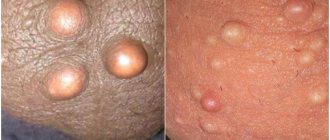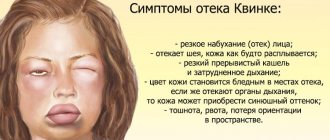Diseases of the reproductive system are no less dangerous to health than diseases of the heart, blood vessels and brain. However, patients with intimate problems turn to doctors too late. As a result, the disease becomes chronic.
Advanced diseases of the reproductive system can lead to sexual dysfunction and infertility. Therefore, it is important to diagnose and treat them promptly.
Epididymal cyst is a disease that affects the stronger sex. Timely treatment (both conservative and surgical) allows you to quickly restore the normal functioning of the reproductive system and avoid serious complications. Therefore, if you have any complaints about sexual health, you should immediately see a urologist.
At CELT you can get a consultation with a urologist.
- Initial consultation – 3,000
- Repeated consultation – 2,000
Make an appointment
Causes of testicular cyst development
Ultrasound of the scrotum
- Cost: 3,000 rub.
More details
Epididymal cysts in men affect up to 30% of the population. There are many reasons. They are divided into organic causes (which cause predisposition) and risk factors (which can trigger the pathological process).
Among the most important reasons:
- Disruption of the spermatic cords.
- Trophic changes in the testicular membranes.
- Infectious diseases of the genitourinary system.
- Chronic inflammatory diseases of the genital organs.
- Injuries to the genital organs.
Treatment is prescribed based on the causes of the disease. So, if the root cause is trauma, and the cyst does not tend to increase in diameter, then conservative treatment will be preferable. If the root cause is organic pathology, then it is more advisable to remove the formation.
Causes
Lipoma on the genitals in men develops due to:
- Improper shaving of the intimate area, use of a razor. Such a blade often damages the delicate skin, which can also lead to infection.
- Failure to comply with personal hygiene rules, using someone else's toothbrush, towel, comb.
- Hormonal imbalance. Atheroma appears especially often in adolescents due to excessive testosterone production.
- Increased sweating in the groin area, resulting in blockage of the sweat and sebaceous glands.
Wen also occurs due to wearing tight trousers and tight underwear. Depilation and piercing often injure the sebaceous glands, which also provokes the appearance of pathology.
Symptoms of testicular cyst
The disease manifests itself from the very beginning of the development of the cyst. That is, it can be detected even in the early stages.
Symptoms include:
- Pain and discomfort in the scrotum area.
- Noticeable discomfort in the groin area.
- Swelling or hardened areas (from 2 mm to 3 cm), which can be noticed upon palpation.
Symptoms may appear on only one side. So, a cyst of the epididymis of the right testicle gives pain mainly on the right side. The detection of any two signs indicates that it is necessary to urgently visit a doctor. The cyst may grow larger, so treatment should be started as early as possible.
Symptoms of funiculocele
As mentioned above, the disease is characterized by an asymptomatic clinical picture. As the size of the cyst increases, it can put pressure on the nerve endings, which causes pain. They intensify with palpation and physical activity. In its advanced form, funiculocele can cause inguinal hernias and cord torsion. The signs of a spermatic cord cyst, if they are expressed in principle, are similar to other diseases: inguinal hernia, hydrocele, cancerous tumor, spermatocele. Self-medication in all these cases is fraught with dangerous consequences, so it is better to prefer consulting a doctor to the advice of friends and anonymous forums.
Our doctors
Kochetov Sergey Anatolievich
Urologist, Candidate of Medical Sciences, doctor of the highest category
35 years of experience
Make an appointment
Perepechay Dmitry Leonidovich
Urologist, Candidate of Medical Sciences, doctor of the highest category
41 years of experience
Make an appointment
Khromov Danil Vladimirovich
Urologist, Candidate of Medical Sciences, doctor of the highest category
Experience 36 years
Make an appointment
Anesthesia for hernia repair
Each clinic can set its own rules for hospitalization and independently decide which method of pain relief to use during cyst excision operations.
The International Children's Andrology Center sets two goals: reducing the concentration of medications and maximizing the physical and psychological comfort of the patient, including after surgery. Therefore, we prefer the optimal combination of local anesthesia and sedatives.
Diagnosis and treatment
To make an accurate diagnosis, methods such as diaphanoscopy and ultrasound are used. The epididymal cyst of the left testicle, as well as the right one, is clearly visible during these examinations. Therefore, problems with differentiating this disease from others usually do not arise.
The treatment regimen depends on the course of the disease. First of all, the doctor conducts a dynamic observation and finds out whether the cyst is growing over time, whether new symptoms appear, and whether the cyst causes noticeable discomfort.
If the cyst does not grow and does not interfere with the patient, physiotherapy is prescribed and the disease is monitored over time. If there is a tendency for the formation to grow or the cyst reaches a large size, surgical treatment is performed. It is important to know that modern surgical techniques make it possible to get rid of cysts without any consequences for male reproductive health.
Why do neoplasms appear?
Doctors note several reasons for the development of cysts on the head of the penis. The most common include viral infections, chronic dermatoses, allergic reactions and poor intimate hygiene. All neoplasms are classified depending on the provoking factor.
- Atheroma. A benign cyst that occurs due to blockage of the sebaceous gland duct. Also known as omentum and wen. It is a fairly large capsule with opaque contents. Its color can vary from white to different shades of yellow.
- Molluscum contagiosum. Neoplasm of parasitic nature. The causative agent is a virus belonging to the Molluscipoxvirus group. It appears as nodular rashes with curdled contents.
- Condyloma. The cause of development is human papillomavirus. The genital wart has a papillary appearance. It may grow over time. Happens quite often.
- Fordyce granules. Pearly papules are small in size. They usually appear in bulk. They do not pose a threat to health, but there is a risk of infection if squeezed.
Removal of epididymal cyst
Surgical treatment of epididymal cysts is prescribed when the formation grows rapidly and is large in size. In particular cases, surgery may be required if an infection occurs or if cancer is suspected. The transition of a tumor to a malignant form is extremely rare, but such a risk is present. The following types of operations are currently used:
- open surgery;
- puncture;
- sclerotherapy;
- microsurgical operation with optical control.
The most progressive technique is endoscopic. Due to the short recovery period and minimal number of contraindications, this operation has become the main one in the surgical treatment of cysts. The essence of the intervention is that no incision is required; all manipulations are performed through a small puncture.
Complications
Removal of spermatocele, although a radical method, is very effective. If this pathology is not treated, it will develop and can lead to impaired reproductive function and infertility. With timely treatment, a man's reproductive health is completely restored.
Complications are also possible after surgery. Among the most common are the following:
- hydrocele;
- bleeding on the scrotum;
- pronounced scarring process;
- obstruction of the seminal tract;
- damage to testicular vessels.
To prevent complications and make treatment effective, contact specialists. The vast experience of the doctors at the Dr.AkNer clinic guarantees excellent results and qualified medical care.
Recovery after surgery
In the early postoperative period, observation by a specialist is necessary to exclude the development of complications. In the first hours after surgery, cold compresses with ice are prescribed to relieve swelling or suspensions, which should support the scrotum. At the discretion of the attending physician, a course of antibiotics and painkillers may be prescribed after surgery.
Before discharge, the attending physician gives individual recommendations on the patient’s behavior at home. It is usually necessary to use antiseptics for a few more days. For some time, the following will be prohibited: taking a bath, having sex, lifting weights.
At the CELT clinic, experienced urologists use modern techniques to diagnose and treat epididymal cysts. It is important to consult a doctor on time; in the early stages, the disease is much easier to cure.
Symptoms of atheroma on the penis
Small formations of this nature on the penis are the norm for this organ. But with an increase in the size of the atheroma and its inflammation, complications may appear in the form of purulent formation. Clinical symptoms of atheroma on the penis:
- Skin thickening, neoplasm with a round shape;
- Redness and irritation of the skin;
- Itching at the site of atheroma formation;
- Changes in local and general body temperature.
If such neoplasms appear, you should immediately consult a doctor for further diagnosis and prescribe the necessary treatment.
Useful information about visiting a surgeon at the clinic:
- How to prepare for a surgeon's appointment
- What diseases does the surgeon treat?
- Calling a surgeon to your home
- Surgical care in the clinic
- Surgical care at home
- What symptoms should you contact a surgeon for?
- Treatment of surgical diseases
- Treatment of intestinal pathologies
- Treatment of skin surgical pathologies
- Treatment of bedsores and necrosis
- Treatment of parasitic diseases
- Treatment of inflammatory processes of soft tissues
- Treatment of diseases of the musculoskeletal system
- Diagnosis of surgical diseases
Our services
The administration of CELT JSC regularly updates the price list posted on the clinic’s website. However, in order to avoid possible misunderstandings, we ask you to clarify the cost of services by phone: +7
| Service name | Price in rubles |
| Appointment with a surgical doctor (primary, for complex programs) | 3 000 |
| Ultrasound of the scrotum | 3 000 |
| Ultrasound of the kidneys and adrenal glands | 2 700 |
All services
Make an appointment through the application or by calling +7 +7 We work every day:
- Monday—Friday: 8.00—20.00
- Saturday: 8.00–18.00
- Sunday is a day off
The nearest metro and MCC stations to the clinic:
- Highway of Enthusiasts or Perovo
- Partisan
- Enthusiast Highway
Driving directions
The mechanism of occurrence of pheniculocele and hydrocele
Normally, the testicles, together with the vaginal process of the peritoneum, which forms their outer shell, enter the scrotum, descending through the inguinal canal, even while the child is developing in the womb.
By the time the baby is born, or sometimes a newborn boy, the hole connecting the abdominal cavity and the membranes of the testicle should close.
If this does not happen, through the remaining duct the peritoneal fluid enters the membranes of the testicle (a hydrocele occurs) or into the membranes of the spermatic cord (a cyst occurs).
Diseases of the scrotal organs
APPOINTMENT WITH DOCTOR OLEG VIKTOROVICH AKIMOV
The organs of the scrotum include the testicles, epididymis, spermatic cords, which include the vas deferens and testicular vessels. The formation of sperm occurs in the testicles, their maturation and accumulation occurs in the epididymis, and the vas deferens serve to bring them out. In addition, the formation of the male sex hormone, testosterone, occurs in the testicles, which performs a number of important functions in the male body. Diseases of the scrotal organs can be divided into inflammatory and non-inflammatory, as well as injuries of the scrotal organs. Inflammatory diseases include orchitis and epididymitis. This is an acute or chronic infectious and inflammatory disease of the testicle and/or epididymis. The causative agents of infection can be both nonspecific and specific (gonococci, chlamydia, mycoplasma, ureaplasma, trichomonas, etc.) bacteria, as well as viruses. Most often, the disease is a complication of inflammatory changes in neighboring organs (prostatitis, vesiculitis, urethritis), which occurs against the background of hypothermia, decreased immunity, and scrotal injuries. Non-inflammatory diseases of the scrotum include: varicocele (dilation of the veins of the spermatic cord), hydrocele, epididymal cysts, and rarely testicular cancer.
What is a varicocele?
Varicocele or varicose veins of the spermatic cord is an expansion of the veins of the pampiniform plexus, located in the scrotum along the spermatic cord. This dilatation mainly occurs as a result of increased pressure in the testicular vein, combined with insufficiency or absence of venous valves in it. It most often occurs in adolescents aged 10 to 14 years. An increase in testicular temperature, which occurs as a result of a violation of the venous outflow, leads to disturbances in its function, atrophy and often to the development of male infertility. Varicocele can cause insufficient production of testosterone (male sex hormone) and early male menopause. In this regard, operations for varicocele are currently offered not only to young men, but also to older men (after 45 years). Varicocele is observed mainly on the left side (in the left half of the scrotum and along the left spermatic cord), which is associated with the anatomical features of the origin of the left testicular vein. Bilateral varicocele occurs in 30% of patients. Varicocele on the right is observed more often as a symptom of pathology of the right retroperitoneal space (tumor of the right kidney, retroperitoneal fibrosis, etc.). Varicocele is treated only with surgery. For this purpose, several operations have been proposed, the essence of which boils down to ligating varicose veins, through which blood flows from the testicle, and starting blood flow through normal veins. What are the absolute indications for the treatment of varicocele: male infertility, pain or heaviness in the scrotum, testicular atrophy. The following mechanisms of impaired spermatogenesis in men with varicocele are assumed: increased temperature in the testicles due to venous blood stasis, retrograde entry of toxic metabolites from the adrenal glands and kidneys, blood stagnation with the development of hypoxia of the germinal epithelium, changes in the functioning of the hypothalamic-pituitary-testicular axis. Recent experimental results confirm the relationship between increased blood flow, increased temperature in the testicles and impaired spermatogenesis.
What is testicular hydrocele?
A hydrocele, or hydrocele, is a collection of fluid within the membranes that normally surrounds the testicles. The causes of hydrocele can be congenital non-closure of the connection between the abdominal cavity and the vaginal membrane of the testicle (communicating hydrocele of the testicular membranes, a congenital condition more common in children), inflammatory processes of the testicle and its epididymis (orchitis, epididymitis), trauma to the scrotum, lesions of the inguinal and pelvic lymph nodes (metastases). tumors, parasitic diseases - filariasis), severe heart failure. In adult men, the incidence of hydrocele is within 1%, although this varies widely between countries. Hydrocele of the testicular membranes can also develop as a complication of operations to correct inguinal hernias or varicoceles. Diagnosis of this condition is based on a physical examination and physical examination. Diaphanoscopy and ultrasound examination of the scrotum help to establish an accurate diagnosis. Characterized by enlargement of the scrotum. The skin of the scrotum is unchanged. When palpated, the enlarged half of the scrotum has a dense elastic consistency and is painless. The testicle is usually pushed downwards; if it is large, it is pushed upward, and is often not palpable. Palpation is painless. When the scrotum is examined in a dark field (diaphanoscopy), a normal or slightly reduced testicle is clearly visible against a pink background. Hydrocele does not pose a threat to the patient’s life; it only causes aesthetic and functional inconvenience. Sometimes the dropsy of the testicular membranes can be so large that it makes it difficult to walk or even sit. The prognosis for large sizes is atrophy and impaired spermatogenesis. There are no drug treatments for testicular hydrocele. Temporary and quick help can be provided to the patient by puncturing the dropsy with a special needle and evacuating the dropsy using a syringe. However, puncture of dropsy ends in its recurrence in 100% of cases. The only radical way to get rid of hydrocele forever is surgery.
What is an epididymal and spermatic cord cyst?
An epididymal cyst or spermatocele, as well as a spermatic cord cyst or funiculocele, is a round-shaped voluminous formation, which is an accumulation of fluid, surrounded, like any cyst, by a dense fibrous membrane or capsule. Spermatoceles and funiculoceles form in the epididymis or in the vas deferens (part of the spermatic cord) when their excretory ducts stop emptying normally and fill with fluid that the epididymis produces to ensure normal maturation and transport of sperm. There is a history of trauma or inflammation of the scrotum, they can also be congenital. Spermatocele and funiculocele are asymptomatic. In old age, they cause pain when walking and physical work. Upon palpation above the testicle or without connection with it, a spherical formation is determined, with a smooth surface, soft-elastic consistency, painless. Sometimes slightly dilated veins of the spermatic cord. Epididymal cysts are much more common than spermatic cord cysts. An epididymal cyst does not pose any danger to human health and life. It should be treated only when it begins to cause noticeable and frequent pain or increases to such an extent that it causes a significant enlargement of the scrotum, which interferes with movement and sitting. The basis for diagnosing diseases of the testicle, its epididymis and spermatic cord is a physical examination (primarily palpation or palpation). The leading auxiliary methods are ultrasound examination of the scrotum. In recent years, ultrasound of the scrotum, as a much more informative and accurate method, has practically replaced the previously used diaphanoscopy. An ultrasound of the scrotum can accurately determine the location of the epididymal cyst and its size. Treatment for epididymal cysts is not required in most cases. Surgical treatment is excision of the epididymal cyst. It is recommended to limit physical activity for several months after surgery. The peculiarity of this operation is the removal of the cyst without violating its integrity.
What is epididymitis?
A feature of the course of this disease is most often the presence of sexually transmitted pathogens, often associated with the appearance of a new sexual partner or with the presence of several sexual partners in the recent past. Epididymitis is an inflammation of the epididymis. Orchitis is inflammation of the testicle itself, and orchiepididymitis is simultaneous inflammation of the testicle and its epididymis. In practice, epididymitis is most often observed, less often orchiepididymitis and even less often isolated orchitis. Acute epididymitis, orchiepididymitis or orchitis is a sudden inflammation, accompanied by enlargement and hardening of the testicle and/or its epididymis, sharp and intense pain and a rise in body temperature. Symptoms are usually one-sided: pain in the testicles, swelling of the scrotum. There may be symptoms of urethritis, often asymptomatic: discharge from the urethra, dysuria. With proper treatment, these diseases disappear within 2 weeks. Chronic inflammation of the testicle and/or epididymis is characterized by a long-term (from several months to several years) course and resistance to treatment. Tuberculous epididymitis most often has a chronic course. Recurrent inflammation of the scrotal organs is associated with inadequate treatment or repeated infection in the epididymis and testicle. Chronic and recurrent epididymitis, orchiepididymitis and orchitis are manifested by a less pronounced increase and more local compaction of the scrotal organs, the pain is less intense and paroxysmal in nature, body temperature is usually normal. Inflammation of the testicle and/or its epididymis is dangerous, first of all, due to the development of male infertility. If they are not treated promptly, they can lead to disruption of sperm production, their normal development and transport from the testicle to the posterior urethra, where sperm is finally formed. If there is bilateral inflammation of the scrotal organs, the risk of infertility is much higher. In such cases, problems may develop associated with insufficient production of the male sex hormone - testosterone (decreased libido, weakened erection, decreased performance, decreased muscle mass, etc.). The basis for diagnosing diseases of the testicle, its epididymis and spermatic cord is a physical examination (primarily palpation or palpation). The leading auxiliary methods are diaphanoscopy and ultrasound examination of the scrotum. All of these methods are completely painless, and their correct use and proper interpretation allow an accurate diagnosis to be made in the vast majority of cases. To establish the causes of epididymitis, orchitis and orchiepididymitis, a general analysis and culture of urine for microflora are required, and sometimes sperm (ejaculate) is analyzed for the presence of various infections. Tests are performed for the presence of sexually transmitted diseases. If there is suspicion, an examination is carried out for the presence of Mycobacterium tuberculosis in the urine and/or ejaculate. If a testicular tumor is suspected, blood tests are performed for the appropriate tumor markers. Only a correctly constructed set of diagnostic measures makes it possible to establish an accurate diagnosis and carry out the most effective treatment. Be sure to consult a urologist or andrologist!
Diagnostics
Before treating inflammation of the glans in men, it is necessary to undergo a complete diagnosis. To carry out effective treatment, it is important to establish the cause of the disease. To relieve inflammation of the head of the penis, it is necessary to conduct a series of studies. In order to determine the susceptibility of pathogenic flora to the planned treatment of inflammation of the head, biomaterials are collected. A blood test is performed for the presence of infections (hepatitis, HIV, syphilis), a general blood test, a general urinalysis and a biopsy of the affected areas.









